Mysterious sea and river depths have always attracted man. Hidden from prying eyes, it would seem that they are so close, but at the same time, distant, like a magnet, attract attention. In many legends, they are the abode of mythical creatures and even an entire continent.
It is not surprising that over time, mankind has found a way to penetrate the underwater world and engage in detailed study of it, which has not been completed even today. We are talking about diving, a fairly popular fun in resorts abroad and not only. The lesson involves special equipment and equipment, one of which is a diving regulator.
Content
General activity information
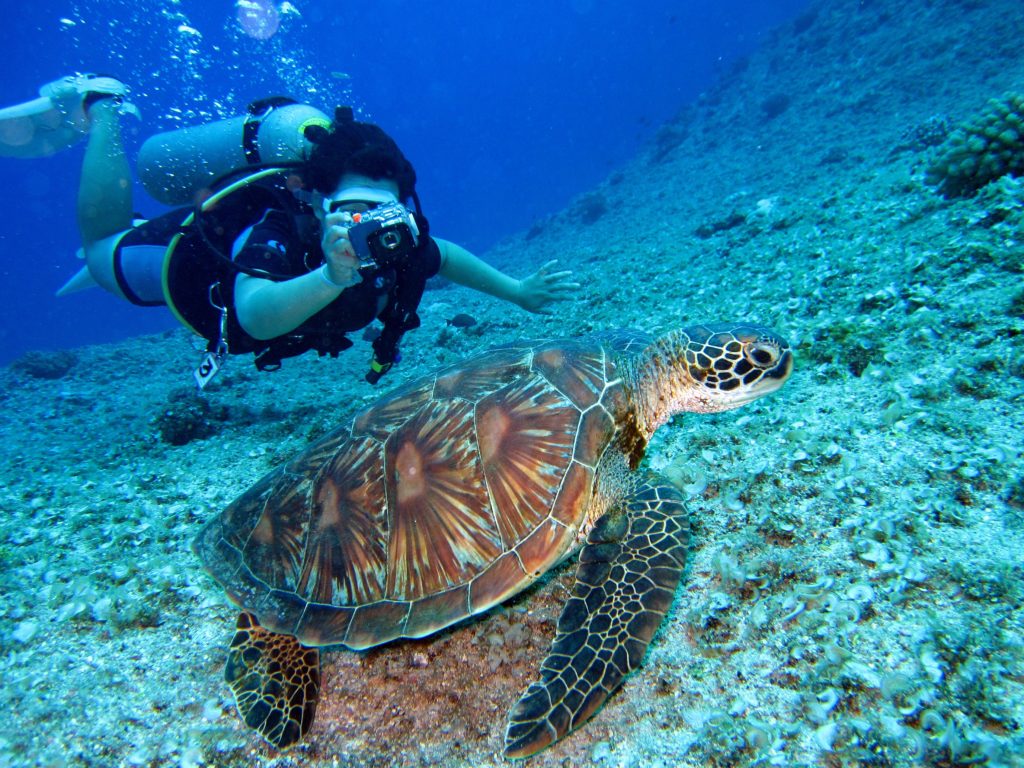
Diving means diving in a special suit and equipment that supplies a person with air for 12 hours. The time spent depends on the equipment used and the goals pursued.
This made it possible to study the seabed in detail, get acquainted with its inhabitants and fauna. Visit the caves and look at the remains of destroyed civilizations, sunken ships and even find the artifacts left behind. Diving provides a person with the opportunity to observe and interact with the underwater world. It is one of the best entertainment for tourists, a way of active pastime and a profession for a certain circle of people.
Those who engage in this kind of activity are called divers. Anyone who is seriously thinking about diving must be physically healthy.
Depending on the goals pursued, divers are divided:
- The military. They dive to retrieve the remains of sunken ships and carry out underwater repair work on various objects in the water.
- Researchers. Explore the seas and oceans
- Of merchants. They mine pearls, find treasures and hunt exotic animals.
- Lovers. Their task is to get the most out of the dive and get to know the enchanting aquatic world.
The division of activity into types is due to the tasks that the diving performs, as well as the level of his preparedness. Allocate:
- Recreational. Designed for those who enjoy diving and further exploration of marine life. Diving schools have been created especially for this, they teach beginners and upon graduation issue the appropriate certificates.
- Technical. Available to people with good physical fitness and endurance. The main objective is to dive to investigate a specific sunken object. These divers often dive deep and under ice.
- Sports. Practicing athletes train for amateur immersion and participation in sports disciplines where they show their skills. It combines a number of disciplines.
- Professional. Depending on the degree of preparation, they are engaged in underwater photography, research and teach newcomers to diving schools.
What is the regulator
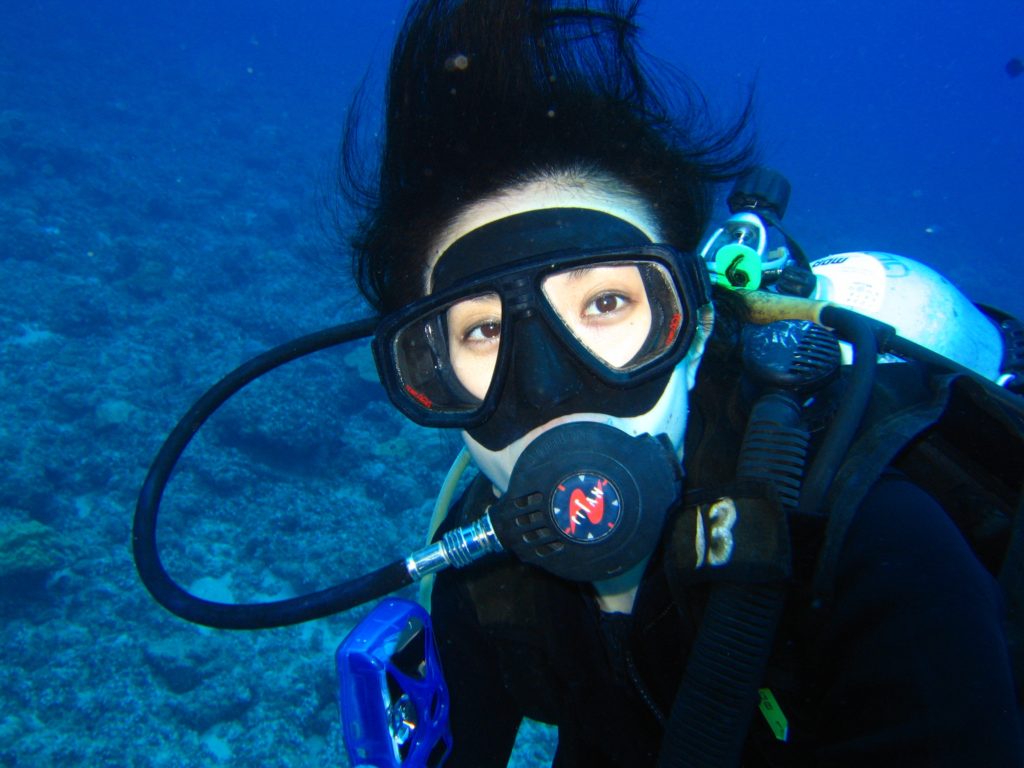
Regardless of the goals pursued and the skills acquired, every diver needs to acquire equipment. The regulator plays an important role in it.Its task is to supply oxygen, which is in a high-pressure cylinder, to the diver, but in a condition suitable for use. In other words, the device controls the flow of air so that the diver gets the right amount of air when inhaling. The second most important task that the device performs is to supply air to buoyancy compensator.
A standard regulator consists of 4 elements:
- Reducer. Reduces the pressure to the set mark (the indicator exceeds the ambient pressure by 6-12 bar).
- Second stage (lung valve). Converts set pressure to ambient.
- Duplicate second stage (another air source).
- Inflator hose (buoyancy control low pressure hose);
- High pressure hose connected to the gauge on the instrument console.
In some models, the redundant second stage and inflator hose are combined into one unit. Dry suits are equipped with additional low pressure hoses. The purchase of a regulator implies only the first and second stages. Modern models have an open (open) system, the inhaled air is sent into the water, and not back into the system. Low cost option compared to closed-type models used by military and professional divers.
Principle of operation
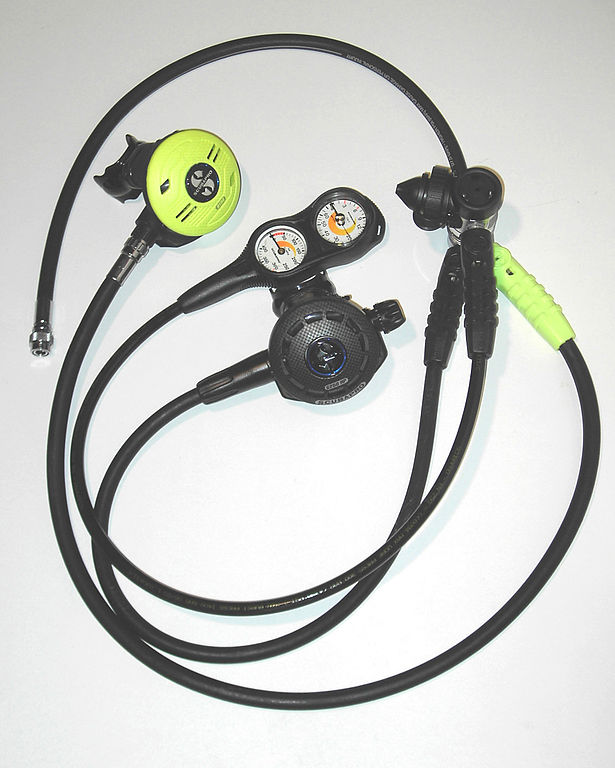
Human lungs can withstand a pressure difference between the inhaled air and the environment not exceeding 0.14 atmospheres. With this in mind, breathing at a depth of 3 m in a relaxed state from a hose coming out to the surface is impossible. The water pressure on the torso creates 0.3 atmospheres.
The diving regulator gives you the opportunity to breathe without any complications under the water column. Air is supplied on demand during inhalation. The device is part of a multi-component breathing system. The connecting link between the balloon, the BC, the pressure gauge, another oxygen source and the lung valve. New models are produced exclusively 2-stage. They are equipped with at least 4 hoses from the gearbox.
From the cylinder, air is supplied to the reducer, where the pressure is reduced to intermediate, or medium. It differs from the environment by 6-11 atmospheres. The first stage is represented by 2 chambers and a valve between them. It is open without pressure. Air gradually fills the first chamber and through the valve the second. When an equivalent mark is reached, it closes. When you inhale oxygen from the second chamber goes to the 2nd stage and the valve opens.
The second stage has 1 chamber and valve. It opens only at the moment of inhalation, the rest of the time it is in the closed position. Sealing is provided by a silicone membrane. Adjacent to it is a valve control lever. When inhaling, the pressure in the chamber drops, and the membrane, pressing in, acts on the lever, the valve opens, and air enters through it. When the pressure in the chamber becomes equal to the environment, the oxygen supply is shut off. Thus, the ability to breathe normally is maintained.
What are
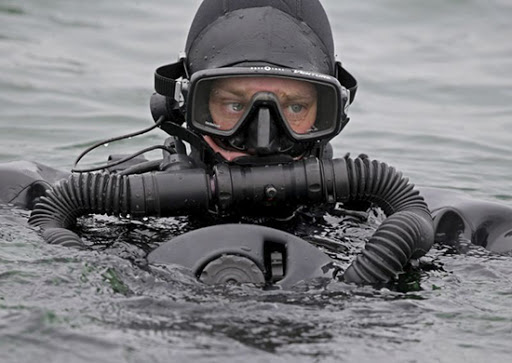
There is a wide range of diving regulators on the market. The lineup covers almost all needs. The main thing is to choose the right regulator. The classification is carried out according to certain technical parameters.
By the type of connection to the cylinder:
- YOKE. A simple and popular variety. Disconnecting and connecting connectors takes place in a matter of seconds. Also called INT, it is designed for a maximum pressure of 230 atm. These characteristics are indicated on the gearbox.
- DIN. Most recognize the reliability of such a connection. This is due to the fact that the reducer is screwed into the cylinder valve. The O-ring is inside and when connected, it practically does not wear out. This reduces the risk of damage. Designed for cylinders over 300 atm.
If there is a need to use other people's oxygen containers, you need to get special adapters in advance.They are freely distributed at specialized points, connection and use will not cause difficulties. Professionals recommend purchasing a universal device with a Din connector and a Yoke clamp adapter. There are also reverse adapters, but due to the nature of the connection (screwed directly into the cylinder), problems will arise with the use, since diving clubs are unlikely to give permission.
What are the first steps in the device
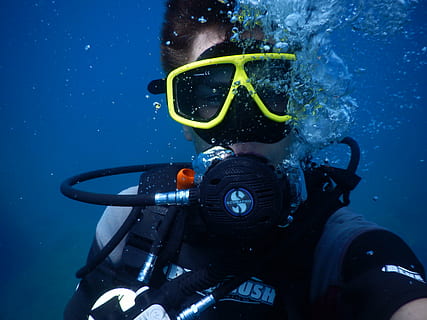
- Balanced. It is easy to breathe regardless of the remaining oxygen in the tank and the depth of the dive.
- Unbalanced. Simple and inexpensive. Caring for him is simple. With increasing depth, the required level of effort for inhalation increases. The main disadvantage is that if one regulator is used for two (first aid), breaths are taken alternately.
- Isolated. With it, you don't have to worry about the structure freezing. This opens up the opportunity for the scuba diver to explore depths in cold water and aggressive environments.
- Membrane. They are used for dirty rivers and reservoirs, as well as in the cold season. The main feature is complete isolation from the external environment.
- Piston. They are used for diving in warm clean water, with the exception of certain models. Design with a minimum number of moving parts. The solution reduced the cost of the regulator and simplified its maintenance.
How to choose
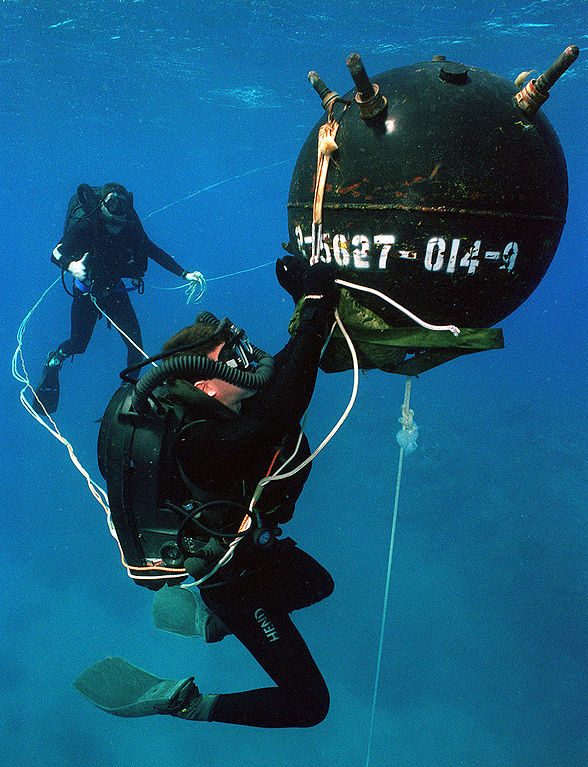
- Where it will be used Initially, it is necessary to determine the scope. This plays a leading role in making further choices. Since the power of the purchased device may not be enough to fulfill the intended goals. For a gradual immersion in warm water to a depth of 25 - 50 m, a value of the work of breathing of 3 J / l is sufficient. If you plan to use it in the cold season, the requirements for the regulator will increase significantly. Every detail should be considered, the safety of the scuba diver depends on it.
- Possibility of use at temperatures below zero. The characteristic is relevant for those who prefer extreme diving. A normal regulator fails at temperatures below 10C. Low temperature models are equipped with heat exchanger, dry insulated chamber and Teflon lining.
- Material. In most cases, the gearbox is made of brass. Previously, it was shipbuilding aluminum. Titanium has replaced them in modern regulators. Internal parts are made of Teflon, silicone, or rubber. The second stage housing is made of plastic. This choice gave corrosion resistance and extraordinary lightness. Internal parts are made of brass, stainless steel, teflon and other materials.
- Care. All equipment needs maintenance. Otherwise, the regulator will fail. Manufacturers make models that require maintenance of varying degrees of complexity. In service centers, you can clarify the frequency of contact with an interested "lung".
- Dimensions. The lightweight and compact regulator is easier to use. This is true for beginners. Titanium models are preferred.
- The quality of the mouthpiece. It is made of rubber or other material of similar characteristics. The mouthpiece is comfortable and stays in place without hand support. Otherwise, it will develop into a bad habit. It is possible to avoid such problems by choosing mouthpieces that match the shape of the mouth.
- Make sure you have certificates. Regulators are subject to mandatory certification. The seller must provide all required documentation upon request.
Best Lowest Cost Regulators for Diving
Calypso Din
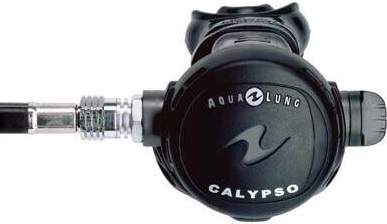
Replenishment of the legendary Calypso series. Beloved by many, due to impeccable quality, she acquired a long-awaited heir. A pleasant feature is the compatibility of new parts with previous representatives of the series. The straight-through piston regulator has been redesigned internally for better performance.The unique second stage hose connection method allows switching to the other side in seconds. But this kind of manipulation should be carried out by a person with extensive experience, in order to avoid the accompanying problems during diving.
Advantages:
- the possibility of immersion in cold water;
- 6 holes for hydraulic stability;
- the adjustable venturi flap shows the best results at depth;
- the improved deflector provides silent bubble exit and comfortable access to the exhalation valve;
- anatomical silicone mouthpiece with reusable clamp.
Disadvantages:
- 3 J / liter at a depth of 50 meters does not characterize the device from the best side;
- many users have problems with leaving.
Mares Rover 15X
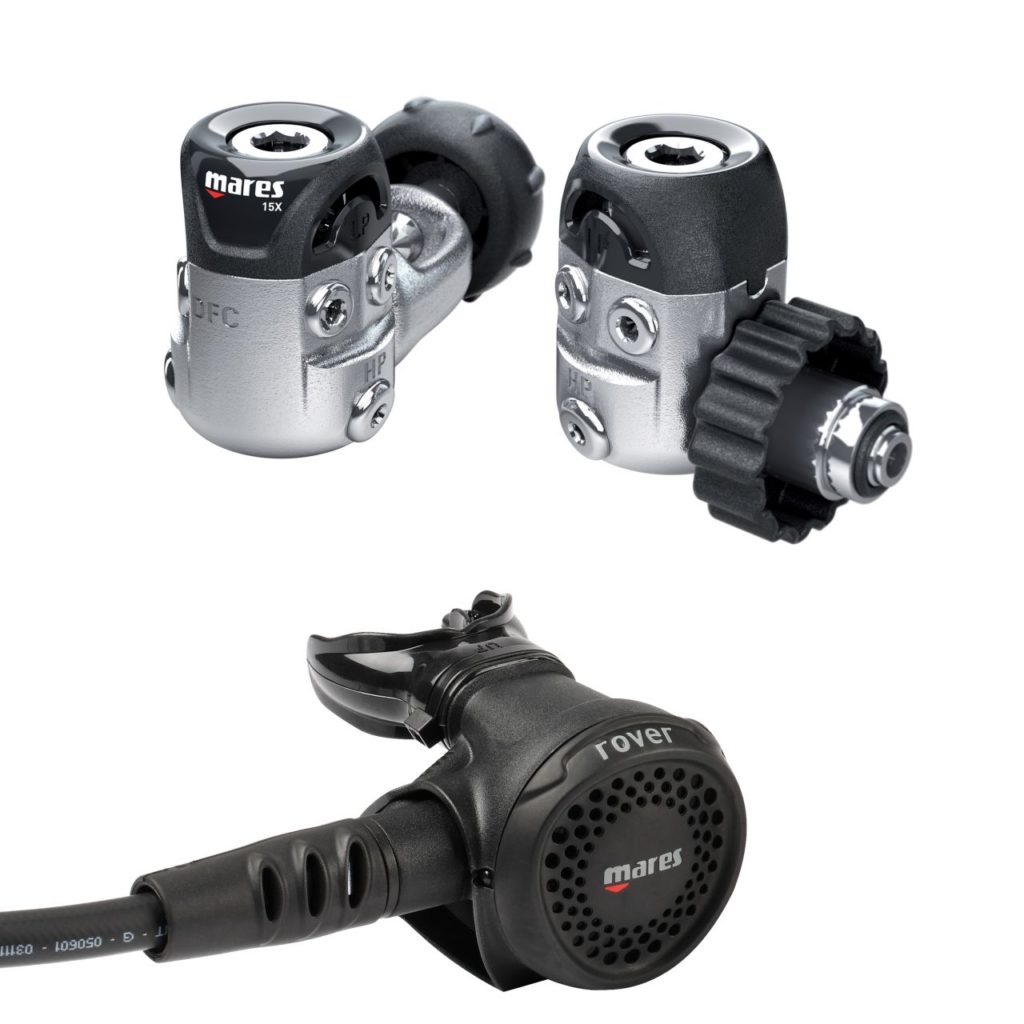
One of the best in its price range. Compact, reliable and efficient, this is how those who have already used it characterize the regulator. It will be good for divers of all skill levels. The ports have been designed to be as convenient as possible. The model is made of chrome-plated sandblasted brass.
Advantages:
- Dynamic Flow Control system is designed to maintain intermediate pressure and ensure uninterrupted gas supply;
- Vortex Assisted Design makes breathing natural at any depth by creating a directional low pressure flow in the second stage;
- balanced membrane;
- large purge button;
- flexible kevlar hose;
- compatibility with Nitrox 40%.
Disadvantages:
- the bag is purchased separately;
- no venturi switch;
- not for cold diving.
Subea 500 DIN
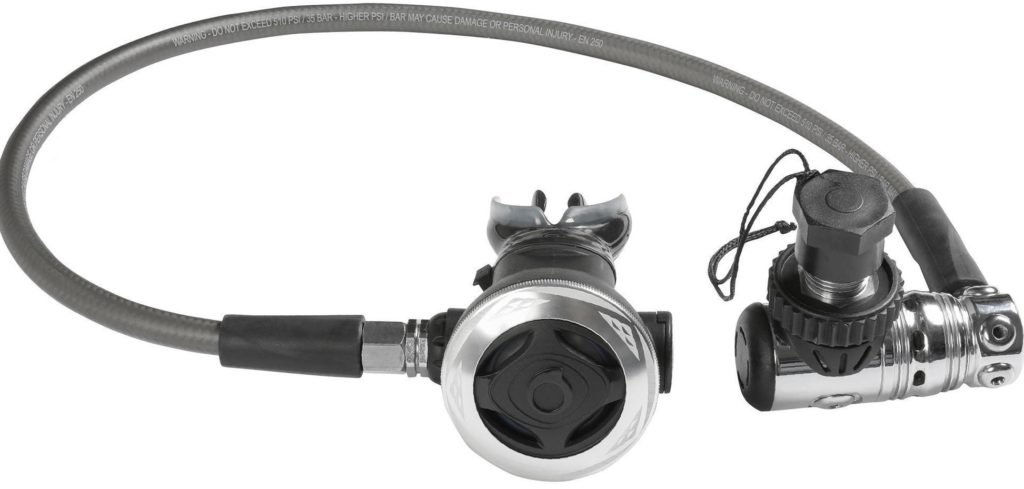
Inspired by the legendary MK25 with balanced piston governor. With a lung valve, breathing is pleasant and easy. The swivel turret allows you to comfortably wrap the hoses around your head. The Octopus is equipped with an ergonomic antenna that deflects air bubbles on the sides, thus not obstructing the view.
Advantages:
- originally from Italy;
- the anatomical design of the mouthpiece was created in cooperation with the best orthodontists in their field;
- a reliable and simple octopus with a 1 m long yellow hose to help your partner in case of an unforeseen situation;
- 300 bar pressure gauge in stainless brass chrome-plated brass housing;
- stylish design.
Disadvantages:
- not very common model.
Best Regulators for Diving in the Mid-Range
Mk2 Evo Din / R095
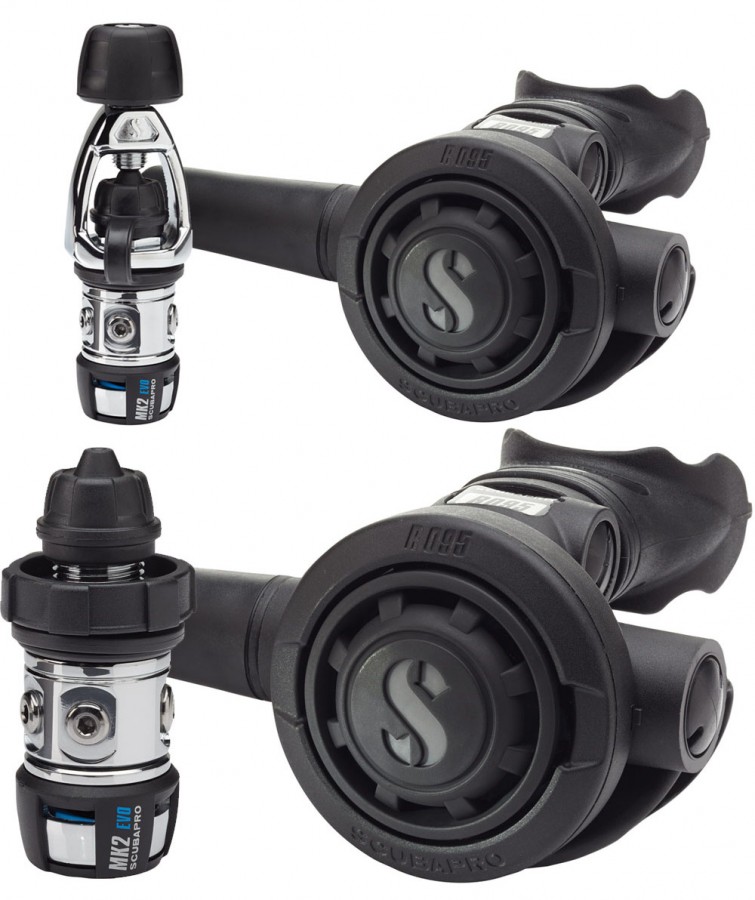
Scubapro needs no introduction. The new product is designed for young athletes. The difference from an adult is a child's mouthpiece and a short hose. It is based on MK2. The piston model will cope with simple dives. Service will not cause problems.
Advantages:
- chrome-plated brass body;
- flow valve for adjusting the direction of air inside the stage;
- change of hose placement is allowed;
- internal parts are insulated from freezing;
- withstands pressure up to 300 bar;
- light weight.
Disadvantages:
- poor performance.
XTX40 DIN
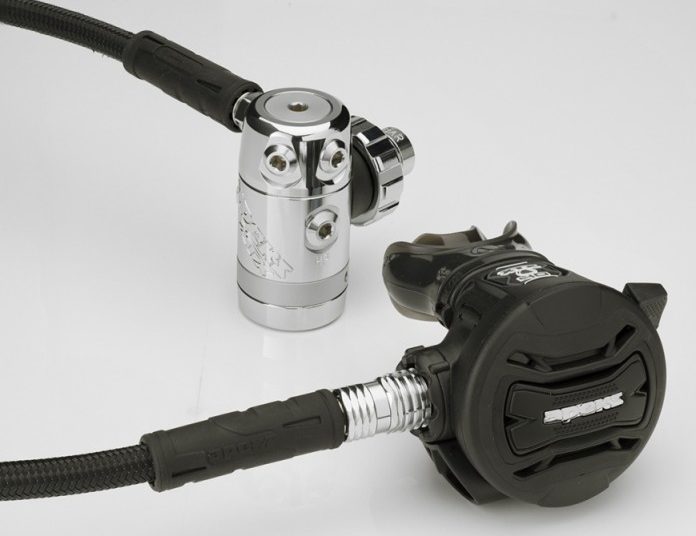
The new British product from Apeks will provide a full range of immersion emotions. The model does not have an adjustment of the valve breaking forces. An additional highlight was the ability to connect the hose from both sides at your discretion. Only this kind of manipulation is best left to professionals. The regulator is equipped with a dry chamber.
Advantages:
- chrome-plated first stage;
- the modified venturi lever reduces the amount of deposits inside;
- silicone expiratory valves;
- compact size.
Disadvantages:
- only works with mixtures containing 100% oxygen.
Aqua lung legend
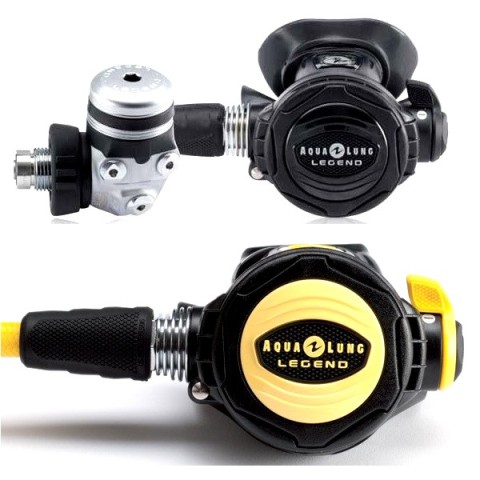
An updated and modernized version of the well-known Legend LX Supreme. The device has received an updated design and weight reduction. The steps have become more compact, but the performance has only increased. Like its predecessor, the device received a super balanced type of regulator. This made it possible for the dive user to raise the pressure applied to the first stage.This cannot be done on balanced models. The solution is compensated for with a dense mixture and does not constrain breathing.
Advantages:
- ports are compatible with any transmitter;
- volumetric intermediate pressure chamber;
- the triangular flywheel can be easily unscrewed even with thick gloves;
- the protective cap connected to the connector will not be lost;
- high strength lightweight braided hoses;
- built-in heat exchanger.
Disadvantages:
- some users complain about maintenance problems.
The best regulators for premium diving
Apeks MTX R
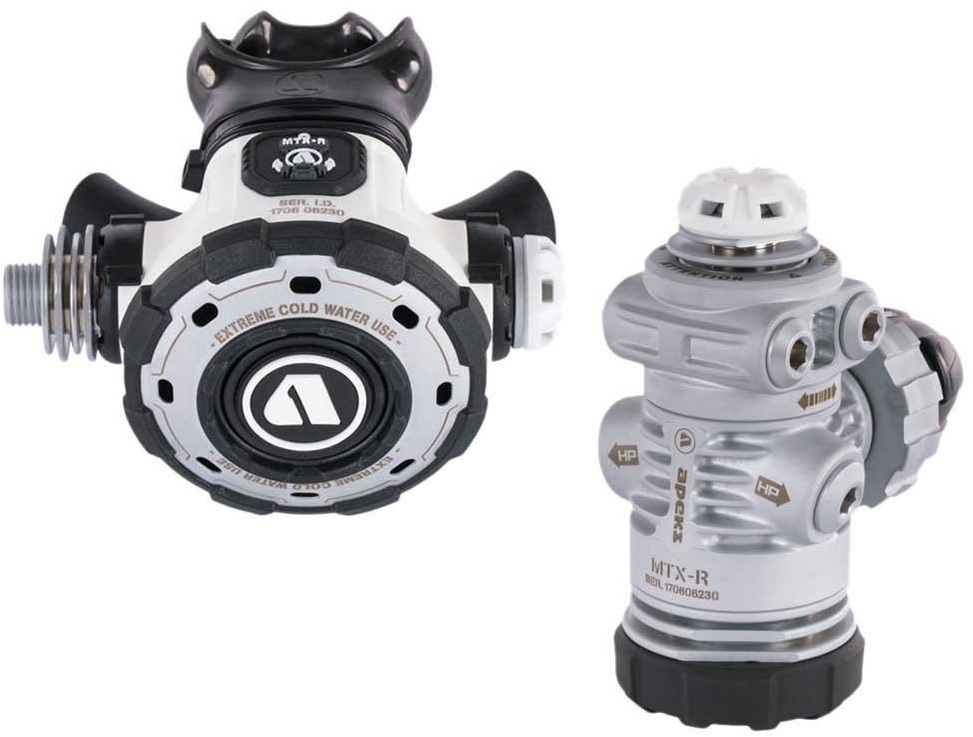
The model is based on the military regulator MTX. The end result is a powerful, reliable system with high performance and cold water immersion capability. High performance at depth has been achieved with a diaphragm over a balanced design. As the scuba diver descends, the average pressure in the hose increases.
Advantages:
- moving turret with LP ports;
- the second stage is equally convenient to use in the right and left-hand configuration;
- the heat exchanger will prevent freezing of the lungs;
- quick release clip for the second stage holder;
- chrome-plated shock-resistant body;
- anatomical mouthpiece.
Disadvantages:
- the first stage has no adjustments.
TUNGSTEN NEW DIN
The prototype was the XTX200 with a unique PVD coating on the first stage. It is applied by settling the vapor in a vacuum. As practice has shown, such a coating exceeds the strength of chromium by several times. TUNGSTEN harmoniously combines high quality, functionality and stylish design.
A key feature of the novelty is the replaceable exhaust air valve. With its help the diver can replace the small outlet with a large one. It depends on the needs of the diver, the maximum possible removal of bubbles when shooting, or the small size for long trips.
Advantages:
- open design of the purge button;
- front cover made of high-strength plastic;
- corporate brass logo of the company;
- micrometric adjustment of the second stage.
Disadvantages:
- too expensive;
- hose swivel unit sold separately.
MK25 EVO / G260
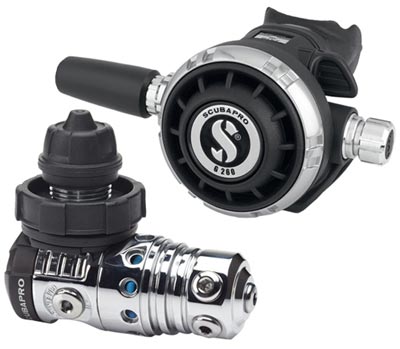
For those who are accustomed to using flagship equipment, you should pay attention to the new model from Scubapro. Distinguished leader in the diving equipment market. The product has set new performance standards in its class. This was made possible by the use of a piston in the first stage MK25 and G260 in the second. The balance achieved will be appreciated by everyone.
The patented XTIS system deserves a special mention. The internal elements of the first stage are completely isolated from contact with water. Combined with additional fins for increased heat transfer, one of the best solutions for extreme diving enthusiasts.
Advantages:
- market leader in piston regulators;
- housing made of plastic and carbon fiber polymers;
- universal model for any type of water;
- anatomical mouthpiece.
Disadvantages:
- high price;
- storage bag sold separately.
Diving lifts the curtain from the water column and allows you to touch the amazing and mesmerizing underwater world. What one could only dream of before has become quite affordable, it is enough to acquire the necessary equipment and start practicing in tandem with an instructor, in specialized clubs, or alone. We hope that with the presented review it will become much easier to choose such an important piece of equipment as a regulator for diving.












